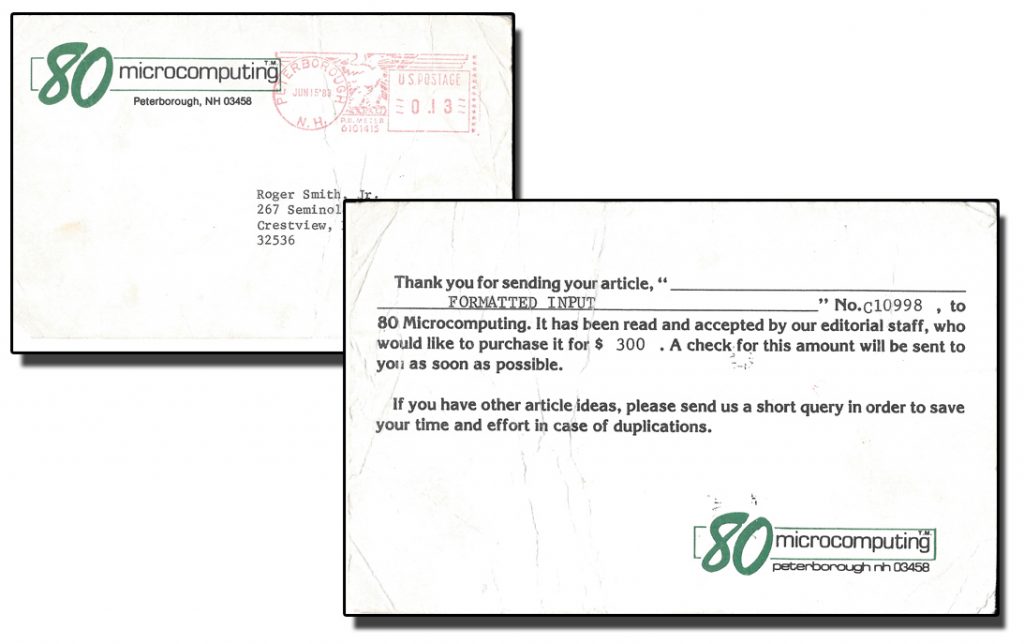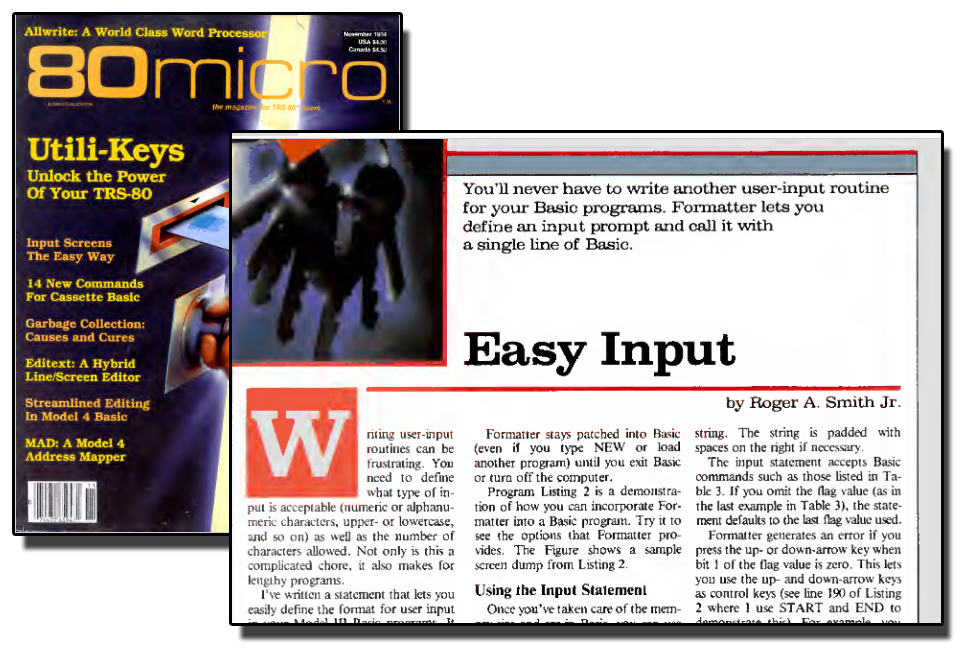While cleaning out a closet this morning, I found a bit of interesting TRS-80 memorabilia.

Back in the early 1980s, I wrote submitted several unsolicited articles about the Radio Shack TRS-80 for 80 Microcomputing magazine. Most of them were accepted and published. I received the above postcard after I submitted an article that I called “Formatted Input.”
Back then an article had to be submitted by mail. I would send the printed text of the article along with a cassette or floppy disk containing the software to the editor of the magazine. Then I would wait and anxiously check the mail each day for a response. Most magazines took several weeks to respond, but 80 Micro usually responded within a couple of weeks.
As you can see, the magazine paid $300 for the article. That was a good chuck of change back in 1983. Many of my friends at the time were working part-time jobs and not taking home that much in a month. Of course, I wasn’t publishing an article every month, but it was still a nice return on the time I spent working on the code and writing the article.
I received the postcard in June of 1983, but the article wasn’t published until the November, 1984, issue of 80 Micro. I don’t recall any other of the articles I had published taking anywhere near that long between acceptance and publication.

Looking at the article and the code, I’m impressed by what the 21-year-old me accomplished!





